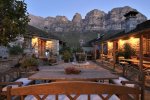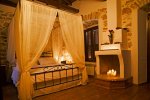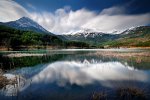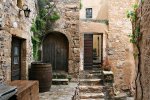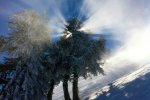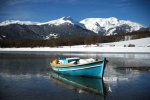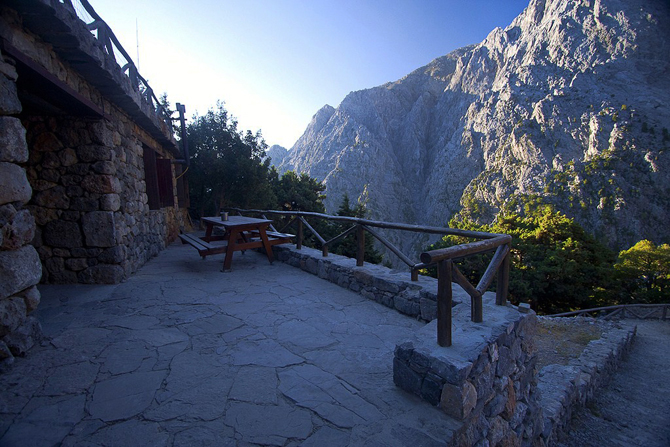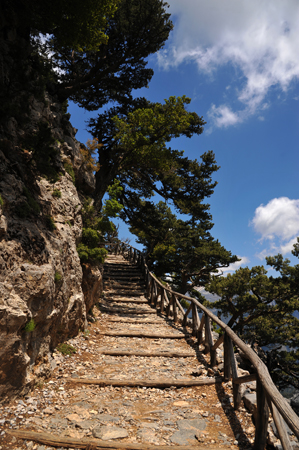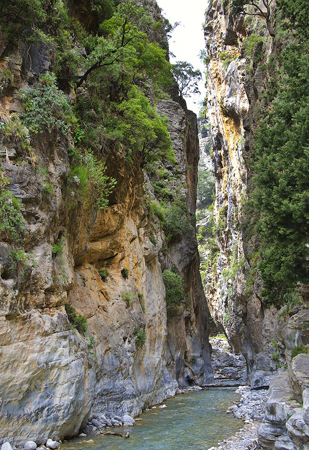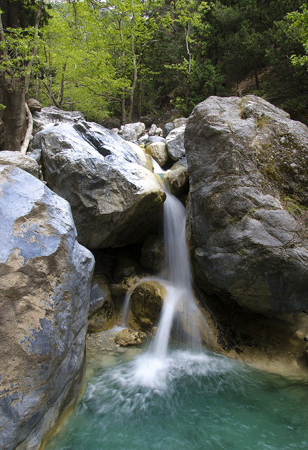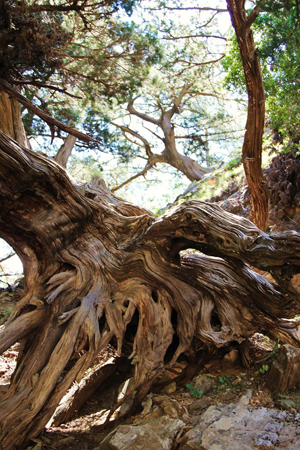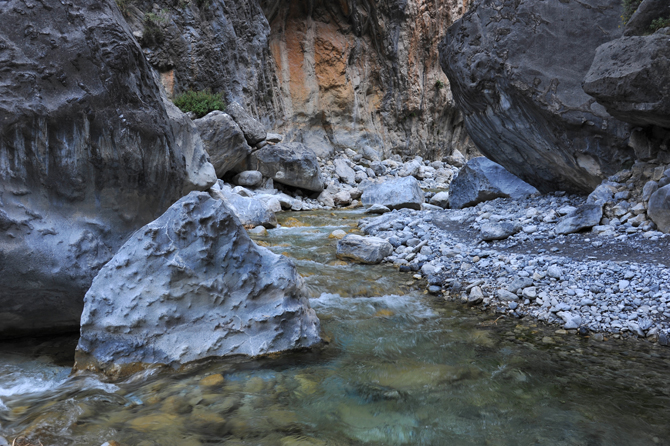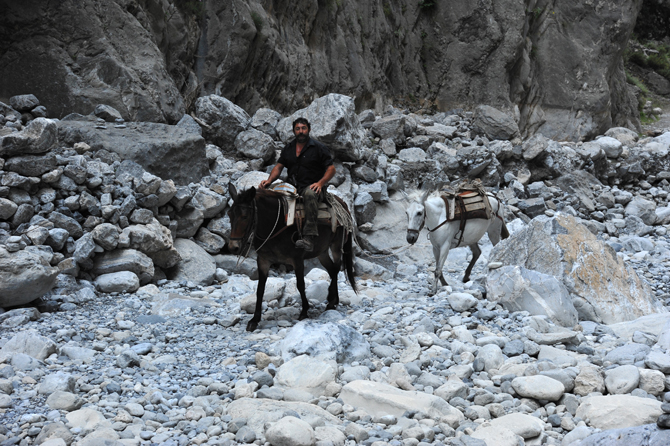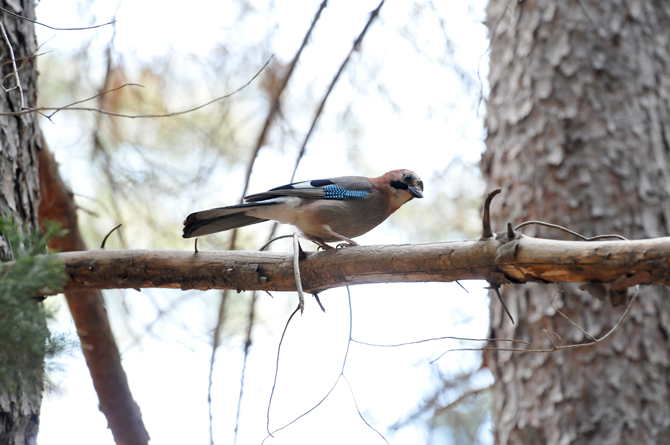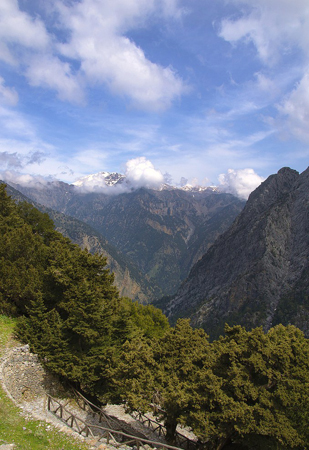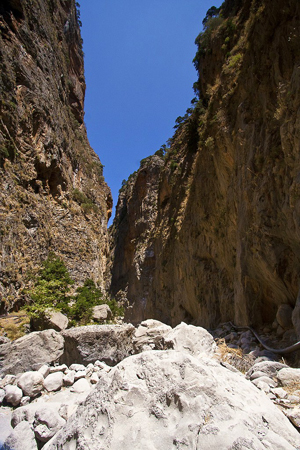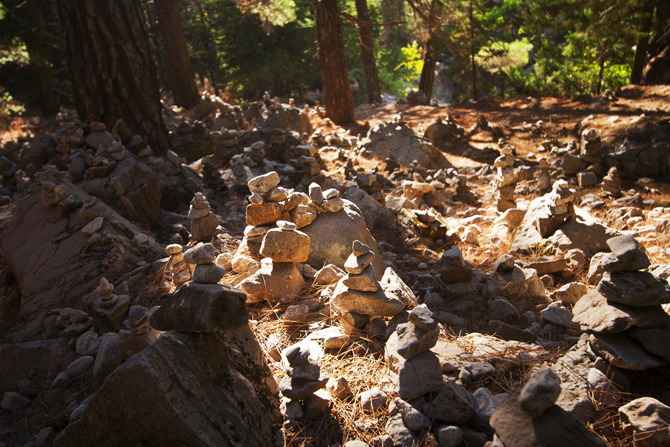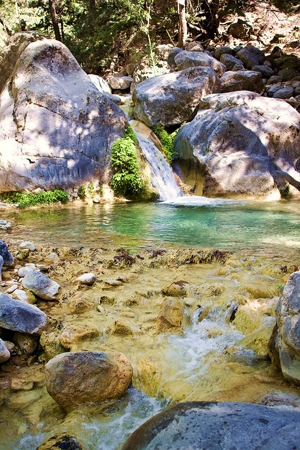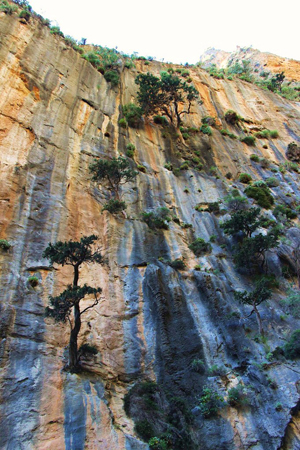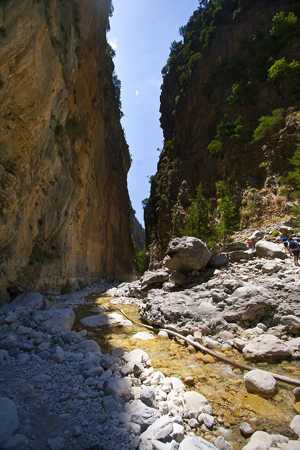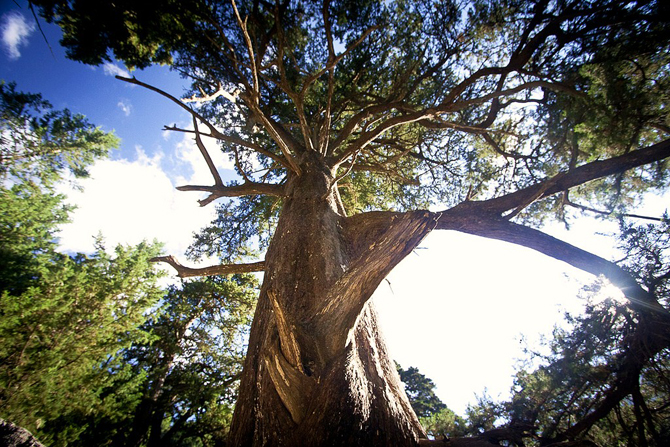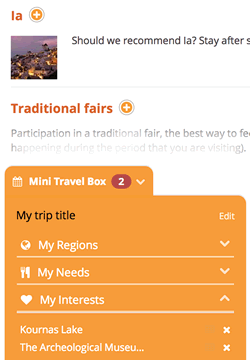“One is the greatest gorge of all, all the others are just gorges”- this is how the locals speak of this special gorge that was designated a National Park in 1962. The gorge starts from Xyloskalo at the south side of Omalos Plateau and slopes down the south side of Lefka Ori (White Mountains). It is 18km long and a soft descent takes almost 8 hours. The scenery gives and goes constantly: mountain and aquatic vegetation on the river banks, brooks, springs, sage trees, wild dictamnus and wild goats on the sheer rocks surrounding the gorge. You will be very lucky if you come across Kri-kri, the native chamois that has been living on the Cretan mountains for centuries and has gradually started to disappear. The deepest spot of the gorge is at approximately 600m, while, at the entrance of the gorge, the Gkigkilos peak is at approximately 2000m in altitude. The narrowest passage is "Portes" (Gates) at approximately 3m in width just before the end of the gorge. People's imagination about the gorge has always been and continues to be rich. According to mythology, the Samaria Gorge was created by a Titan, who resided on the island of Crete, when he threw a huge stab in the bowels of the Earth. At the Gkigkilos Peak opposite Xyloskalo was the throne of Zeus, while further below lies a cave called Demonospilia, due to the specificity of the ground (there are accumulated stones), the atmosphere and underground waters, which create a muffled hum. The oracle of Apollo was also located here. In Agkathoti, a little further down, there is a flat surface which is called Field of Zeus, because, according to the myth, Zeus used to land there with his chariot. A magnificent river flows through the gorge, making it impossible to downhill when it is bloated. In the antiquity, it was named Tareos after the town of Tara, which is located near Agia Roumeli. The ancient city of Tara was of great significance during the Hellenistic times, due to its connection with Lissos, Elyros, Irtakina and Pikilassos, which was called Kinon Oreon and Asclipiio of Lissos was its base. The temple located in the gorge was built around the 1st century BC and was dedicated to the goddess Artemis. Since 1415, it has been converted in to a church dedicated to Agios Nikolaos. The Byzantine church of Osia Maria is still preserved. Moreover, the Samaria village, which is located in the gorge, was named after Osia Maria. The village was inhabited until 1962 when the gorge was designated as a national park. The new village, Agia Roumeli, will welcome you when hungry and tired from the hiking you will leave the gorge behind you. After an enjoyable swim in the crystal-clear sea of Agia Roumeli, you will enjoy traditionally cooked food with local products. The Sfakian pies, just before taking the ferry to Sfakia, will seal this unforgettable day. Remember! Wear sneakers, cool light-colored clothes and take some water and food with you. Walk slowly and cautiously where you step, and enjoy the unique beauty of the landscape by making frequent stops.
Use the map or the alphabet below to find your favorite destination!
Achaea Prefecture
Aegina
Aetoloakarnania Prefecture
Agathonisi
Agistri
Alonissos
Amorgos
Anafi
Andros
Antiparos
Arcadia Prefecture
Argolida Prefecture
Arta Prefecture
Astypalea
Attiki Prefecture
Kalymnos
Karditsa Prefecture
Karpathos
Kasos
Kastelorizo
Kastoria Prefecture
Kavala Prefecture
Kea (Tzia)
Kefalonia
Kerkyra (Corfu)
Kilkis Prefecture
Kimolos
Korinthia Prefecture
Kos
Koufonisi (Ano & Kato)
Kozani Prefecture
Kythira - Antikythira
Kythnos
Samos
Samothrace
Santorini
Schinoussa
Serifos
Serres Prefecture
Sifnos
Sikinos
Skiathos
Skopelos
Skyros
Spetses
Symi
Syros
Would you like to combine skiing in the morning and then go swimming in the afternoon, all in one region? Click to choose your interests and see in which part of Greece you enjoy them. Combinations are endless!
